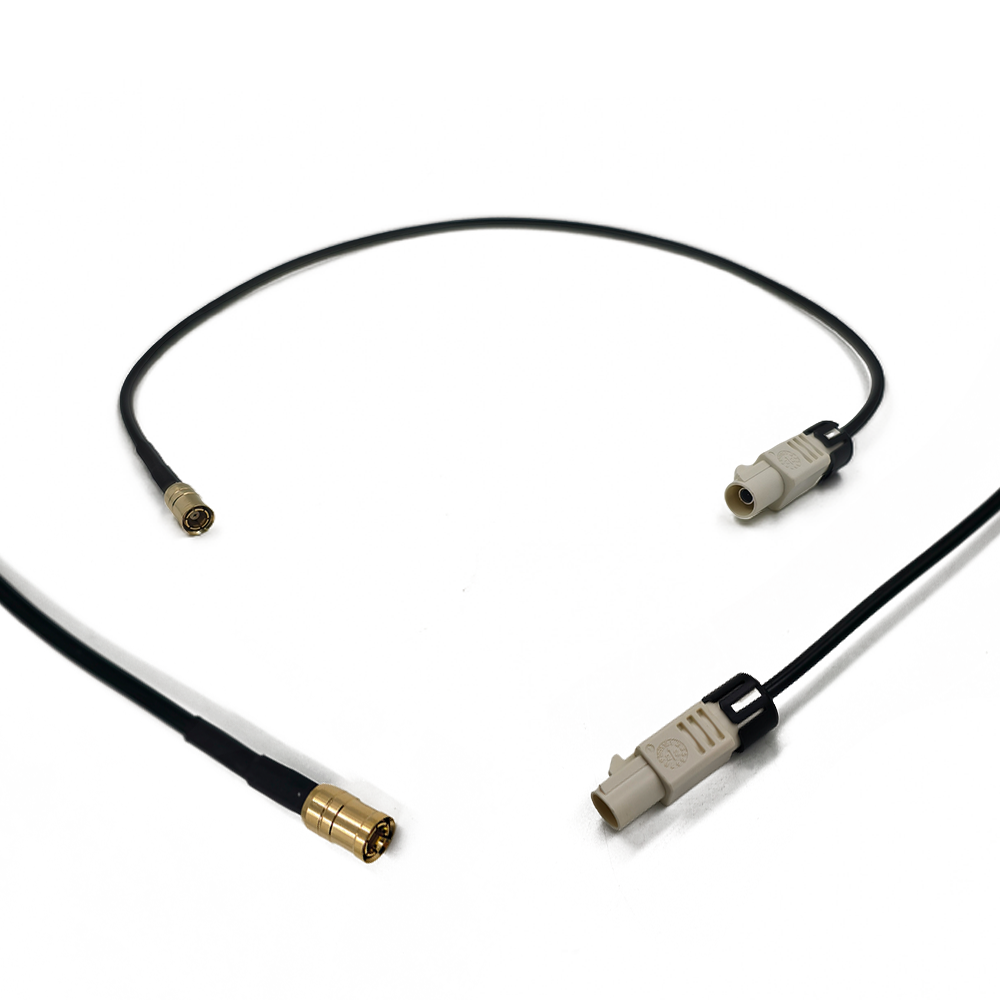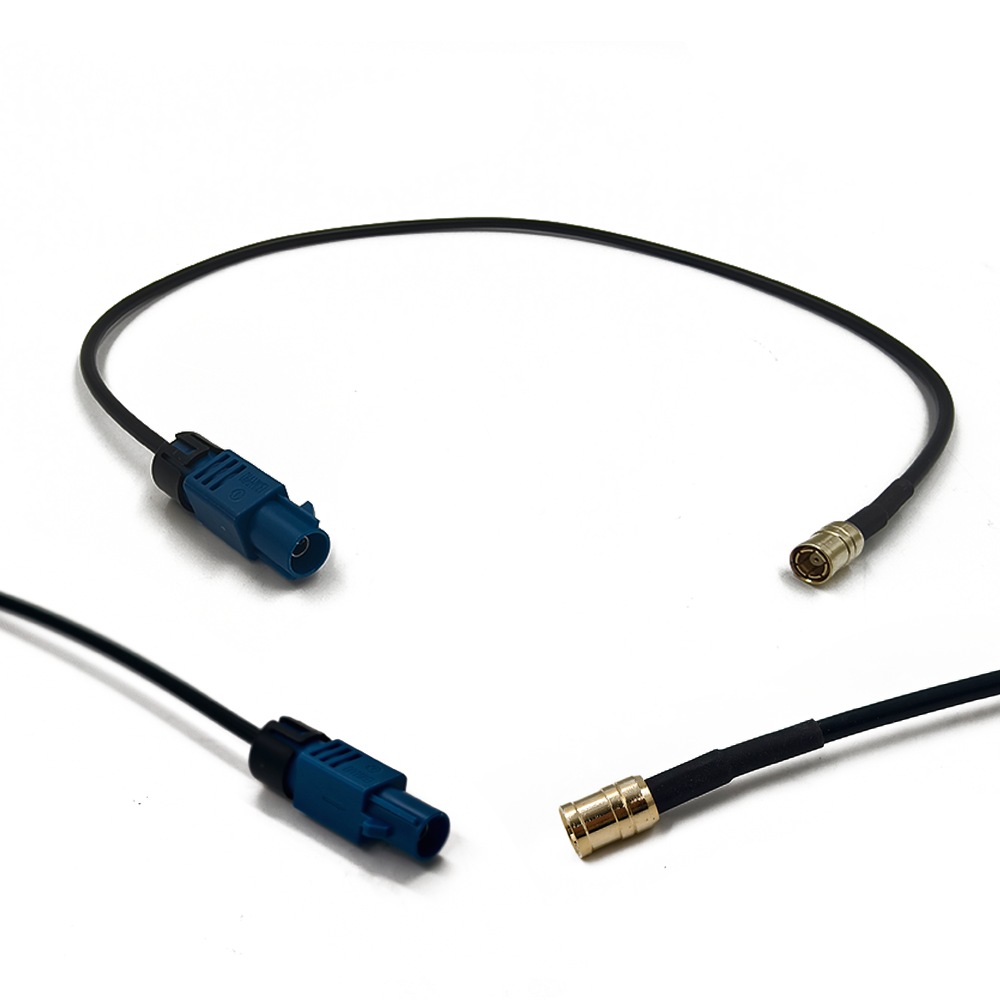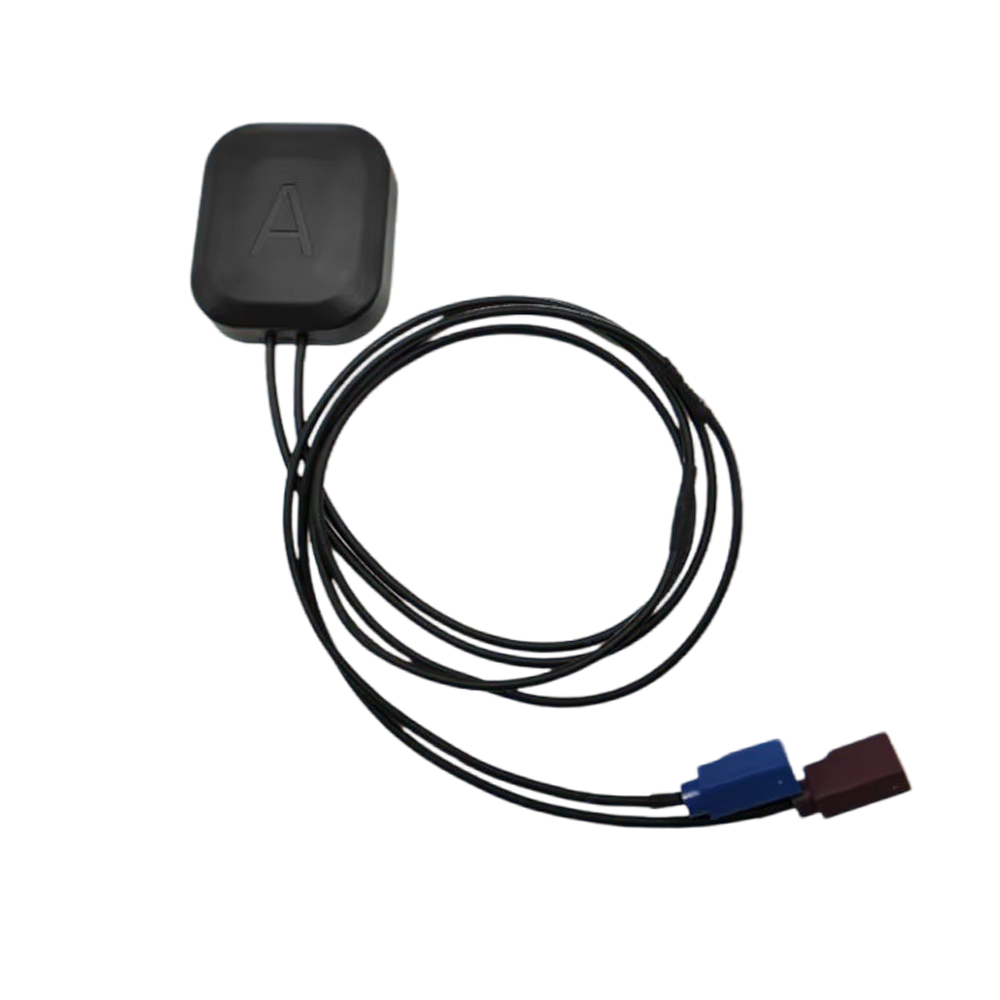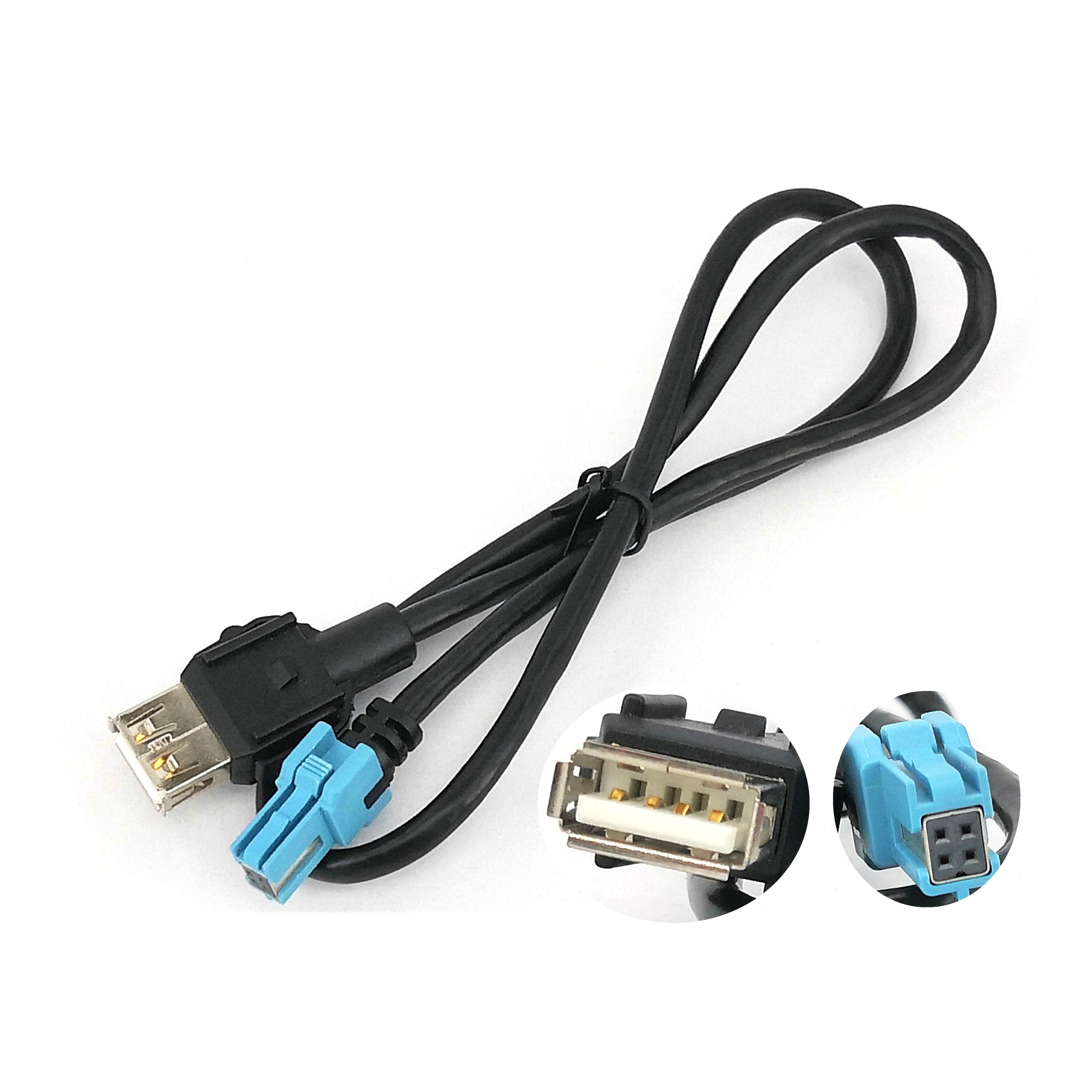Overview
1.1 Historical Context and Evolution
Early GPS antennas relied on passive designs with limited sensitivity, requiring direct line-of-sight to satellites. The advent of active antennas with built-in low-noise amplifiers (LNAs) improved signal capture, but automotive applications demanded additional ruggedization. FAKRA connectors, introduced in the early 2000s, addressed this by providing a color-coded, keyed system to prevent misconnection in complex wiring harnesses. Modern high-sensitivity modules now incorporate multi-constellation support and advanced filtering to mitigate interference from 5G, LTE, and Wi-Fi signals.
1.2 Market Drivers and Applications
The global market for high-precision GNSS antennas is projected to grow at a CAGR of 8.2% from 2023 to 2030, driven by:
Autonomous Vehicles: Level 4/5 autonomy requires centimeter-level accuracy for lane-keeping and obstacle avoidance.
Aerospace and Defense: Unmanned aerial vehicles (UAVs) and precision-guided munitions rely on GNSS for navigation.
Industrial IoT: Asset tracking in logistics and agriculture demands reliable positioning in challenging environments.
Consumer Electronics: Wearables and smartphones benefit from compact, high-sensitivity antennas for fitness tracking and location-based services.
1.3 Key Features
Ultra-Low Noise Figure: LNAs with noise figures <1.5 dB maximize signal-to-noise ratio (SNR).
Multi-Band Support: L1 (1575.42 MHz), L2 (1227.60 MHz), and L5 (1176.45 MHz) bands improve accuracy and reduce multipath errors.
FAKRA Connectivity: Standardized interfaces (e.g., FAKRA H for GPS, FAKRA C for cellular) ensure compatibility with automotive infotainment and telematics systems.
Environmental Robustness: IP67-rated housings and epoxy potting protect against dust, water, and temperature extremes (-40°C to +85°C).
1.4 Challenges
Cost: High-sensitivity LNAs and multi-band filters increase production costs by 30–50% compared to standard antennas.
Thermal Management: Amplifiers generate heat, requiring heat sinks or advanced materials to prevent thermal drift.
Regulatory Compliance: Meeting FCC/ETSI emission masks for co-located LTE/GNSS antennas demands complex filtering.
Design and Construction
High sensitivity FAKRA GPS antenna modules are meticulously engineered to balance performance, durability, and compactness. Their design involves three core components: the antenna element, amplifier circuitry, and FAKRA connector, all housed in a rugged enclosure.
2.1 Antenna Element
2.1.1 Ceramic Patch Antennas
Most modules use microstrip patch antennas fabricated from high-dielectric-constant ceramic materials (e.g., zirconium-titanate). These antennas offer:
Compact Size: A 25x25mm patch can operate at 1575 MHz with a resonant frequency tuned via substrate thickness.
Low Axial Ratio: <3 dB circular polarization minimizes multipath errors by rejecting reflected signals.
Multi-Band Capability: Stacked patches or reactive loading enable dual-band (L1/L2) or triple-band (L1/L2/L5) operation.
Example: The 7102-E3-GNSS-FAKRA antenna uses a stacked patch design with a ground plane choke to suppress surface waves, achieving a gain of 3 dBi at L1 and 5 dBi at L2.
2.1.2 Helical and Spiral Antennas
For ultra-compact applications (e.g., wearables), quadrifilar helical (QFH) antennas provide omnidirectional coverage but suffer from narrower bandwidths. Spiral antennas, while broadband, are rarely used in GPS due to their larger size.
2.2 Amplifier Circuitry
2.2.1 Low-Noise Amplifiers (LNAs)
The LNA is critical for boosting weak signals (-160 dBm) before cable losses. Key specifications include:
Gain: 26–30 dB to overcome coaxial losses (e.g., 2 dB per meter for RG-174).
Noise Figure (NF): <1.5 dB to preserve SNR.
Linearity: High IP3 (>+30 dBm) to prevent intermodulation distortion from strong out-of-band signals.
Example: The TG.08.0723 module integrates a GaAs pHEMT LNA with a NF of 1.2 dB and a gain of 28 dB, enabling it to acquire signals in deep urban environments.
2.2.2 Surface Acoustic Wave (SAW) Filters
SAW filters reject interference from cellular (700–2700 MHz) and Wi-Fi (2.4/5 GHz) bands. Modern modules use tunable bandpass filters to adapt to dynamic RF environments.
2.3 FAKRA Connector
2.3.1 Mechanical Design
FAKRA connectors feature:
Color Coding and Keying: Blue for GPS, black for AM/FM, and green for cellular to prevent misconnection.
Mechanical Locking: Audible clicks and a 0.5 N·m torque requirement ensure secure mating.
50 Ω Impedance: Matched to coaxial cables (e.g., RG-174, LMR-200) to minimize reflections.
2.3.2 Electrical Performance
Insertion Loss: <0.1 dB at 1.5 GHz.
VSWR: <1.2:1 to prevent signal degradation.
Shielding Effectiveness: >80 dB to block external interference.
2.4 Enclosure and Mounting
2.4.1 Materials
Housings: ABS plastic for cost-effectiveness or aluminum for thermal conductivity.
Potting: Epoxy resin (e.g., Hysol 9460) provides IP67 sealing and vibration damping.
2.4.2 Mounting Options
Magnetic Bases: For temporary attachment to metal surfaces (e.g., vehicle roofs).
Screw Mounts: For permanent installations in drones or industrial equipment.
Working Principles
High sensitivity FAKRA GPS antenna modules operate through a multi-stage process involving signal capture, amplification, filtering, and processing.
3.1 Signal Acquisition
Antenna Reception: The patch antenna captures RF signals from GNSS satellites, converting them into weak electrical currents (µV levels).
LNA Boosting: The LNA amplifies the signal by 26–30 dB, raising it above the noise floor of the receiver.
Filtering: SAW filters remove out-of-band interference (e.g., LTE at 1.8 GHz).
3.2 Multipath Mitigation
Right-Hand Circular Polarization (RHCP): Rejects left-handed reflections from buildings or ground surfaces.
Choke Rings: Ground plane structures around the antenna suppress surface waves.
Advanced Algorithms: Receiver software uses Kalman filtering to distinguish direct signals from reflections.
3.3 Multi-Constellation Processing
Modern modules track multiple satellite systems simultaneously:
GPS (USA): 31 operational satellites providing global coverage.
GLONASS (Russia): 24 satellites with better high-latitude performance.
BeiDou (China): 35 satellites offering Asia-Pacific regional accuracy <1 meter.
Galileo (EU): 26 satellites with high-precision Public Regulated Service (PRS).
By combining signals from 20+ satellites, the module achieves a positional accuracy of <1 meter in open skies and <5 meters in urban areas.
3.4 FAKRA Signal Integrity
The connector’s shielded design and impedance matching ensure:
Low Insertion Loss: <0.1 dB at 1.5 GHz preserves signal strength.
High Isolation: >60 dB between adjacent connectors prevents crosstalk in multi-antenna systems.
Advantages and Challenges
-
4.1 Advantages
Reliability: FAKRA’s vibration resistance ensures consistent performance in automotive and aerospace applications.
Interoperability: Standardized connectors simplify integration with existing systems.
Low Power Consumption: Modern LNAs draw <10 mA, extending battery life in portable devices.
Scalability: Modules support IPEX connectors for embedded applications or SMA for external installations.
4.2 Challenges
Cost: High-sensitivity LNAs and multi-band filters increase BOM costs by 30–50%.
Thermal Management: Amplifiers generate heat, requiring heat sinks or potting compounds to prevent thermal drift.
Regulatory Compliance: Meeting FCC/ETSI emission masks for co-located LTE/GNSS antennas demands complex filtering.
Size Constraints: Miniaturization limits antenna efficiency, necessitating trade-offs between form factor and performance.
Applications and Future Trends
-
5.1 Current Applications
Automotive: Telematics units, ADAS sensors, and EV battery monitoring.
Aerospace: Drones for BVLOS operations and precision agriculture.
Marine: Commercial vessels for navigation and collision avoidance.
Industrial IoT: Asset trackers in logistics and cold chain management.
5.2 Future Trends
5G Integration: Combining GNSS with mmWave antennas for V2X communication.
AI-Enhanced Positioning: Machine learning algorithms to filter multipath signals in real time.
Flexible Substrates: Printed antennas on polymer films for wearables.
Quantum Sensors: Atomic clocks integrated with GNSS for centimeter-level accuracy.
By 2030, FAKRA modules are expected to support 6G networks and autonomous drone swarms, with the market for high-precision antennas exceeding $12 billion.
Conclusion
High sensitivity FAKRA GPS antenna modules are a cornerstone of modern navigation systems, enabling reliable positioning in the most challenging environments. Their integration of advanced materials, multi-constellation support, and ruggedized FAKRA connectors makes them indispensable for automotive, aerospace, and industrial applications. While challenges like cost and thermal management persist, innovations in AI, 5G, and quantum sensing promise to unlock new frontiers in precision navigation. As the Internet of Things expands, FAKRA’s role as a standardized, high-reliability interface will ensure its dominance in the next era of connected mobility.
Manufacturers must balance innovation with cost optimization to meet the demands of price-sensitive markets like consumer drones and fleet tracking. Collaboration between antenna designers, chipset vendors, and automotive OEMs will be key to driving adoption and achieving the full potential of high-precision positioning technologies.




































































 Language
Language
 En
En Cn
Cn Korean
Korean

 Home >
Home > 








 18665803017 (Macro)
18665803017 (Macro)













